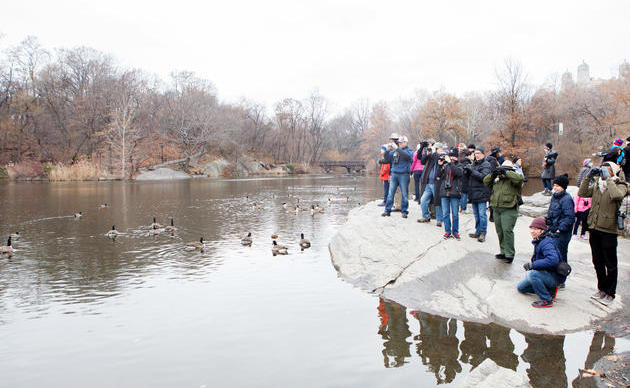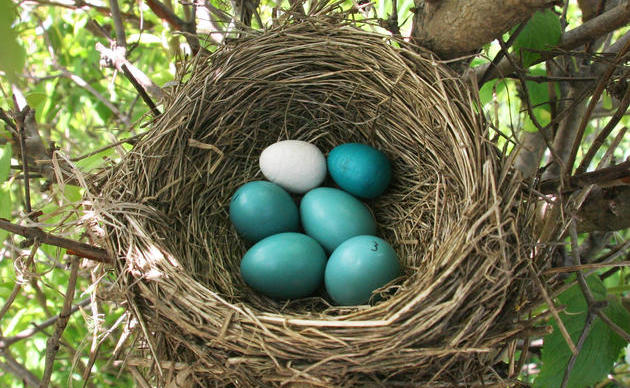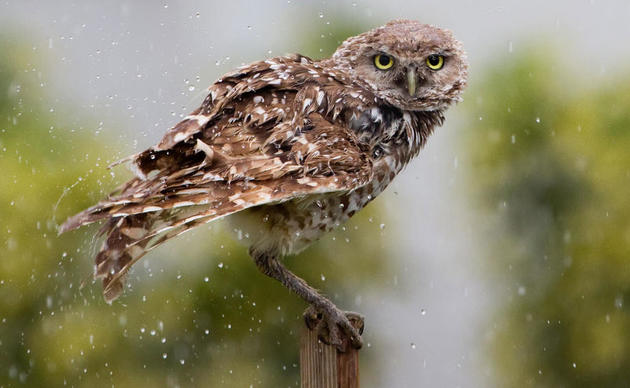Frequently Asked Questions
Q. Why is Waggoner's Gap a good place to see raptors?
A. Migrating raptors need to travel long distances, and it is beneficial to them if they can conserve energy. One way to do this is to take advantage of uplifting winds along linear ridges. The Kittatinny Ridge, where Waggoner's Gap is located, is situated on a southwest orientation for more than 200 miles, from New Jersey to Maryland. Birds flying along the ridge can glide with little effort to reach their destinations to the south. Waggoner's Gap is a good location for observation because it provides great views both north and south, so birds may be seen no matter which side of the ridge they are traveling.
Q. How far do these birds go?
A. It varies by species. Some of the early to mid-season birds like broad-winged hawks, peregrines and ospreys, are long distance migrants that will fly all the way to areas of South America. Birds that migrate later in the season, like red-tailed hawks and golden eagles, may only go south along the Appalachian Mountains to West Virginia. In the case of red-tailed hawks, they may not even leave Pennsylvania.
Q. How do the hawk counters avoid counting the same birds more than once?
A. During migration most of the birds are flying in one direction, southwest along the ridge. To be counted, a raptor must pass beyond a point southwest of the watch site. If a bird is seen flying back northeast, it is subtracted from the count.
Q. Are the hawk counters volunteers or do they work for some organization?
A. All of the hawk counters are volunteers. The hawkwatch is owned by Audubon PA and the count is part of a nationwide effort through the Hawk Migration Association of North America (HMANA), to collect data about raptor migration.
Q. What happens to the data?
A. The data are entered daily into an online data base that is managed by HMANA for analysis and historical trending. Click here to view the daily and historical data for Waggoner’s Gap. HMANA maintains data for 35 sites in Pennsylvania, and more than 275 sites in North America.
Q. How many days and weeks does the count take place?
A. The count takes place every day, weather permitting, from August 1st to December 31st.
Q. Why is there an owl decoy on a pole on the outcrop?
A. Certain raptors, especially sharp-shinned and cooper's hawks and falcons, consider owls to be enemies to the point that they will attack one if they see it. Keeping an owl decoy near the watch site tends to draw some hawks closer, as they swoop in to make passes at the owl to drive this predator away.
Q. How did all these rocks get here?
A. Approximately 440 million years ago, these rocks, which are sandstone, started as sand deposits in a huge inland sea. More materials were deposited on top over the next hundreds of millions of years, which cemented the sand into standstone. About 250 million years ago, movement and collision of the continental plates (North America colliding with Africa) caused the rocks to buckle, fold and uplift creating a mountain chain we now call the Appalachians. At their highest point, they were at least 20,000 feet high. Since that time, erosion by wind, water, and ice has slowly worn the ridges down to its present condition, revealing the folding that occurred during the collision. This ridge stands above the adjacent valleys because the sandstone is more resistant to erosion than the limestone and shale, which underlie the valleys.
Q. Why are the rocks cracked and tumbled?
A. During the ice age (beginning approximately 1.6 million years ago), pulses of glaciation reached the northeast and northwest corners of Pennsylvania, the most recent pulse taking place about 12,000 years ago. During this time, Central Pennsylvania experienced cold, tundra-like conditions. As temperatures repeatedly fell below freezing, water that had seeped into tiny rock fractures would freeze and increase in volume. This expansion forced the rocks apart, fracturing and breaking apart boulders on a micro and macro scale. This breaking apart of rock during freeze-thaw cycles is called frost riving. Frost riving, and the forces of erosion and gravity, created the tumbled boulders we see today.
How you can help, right now
Donate to Audubon
Help secure the future for birds at risk from climate change, habitat loss and other threats. Your support will power our science, education, advocacy and on-the-ground conservation efforts.
Become a Monthly Donor
Donating monthly is flexible, easy and convenient and makes you a champion birds can count on, no matter the season.





